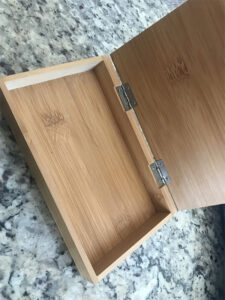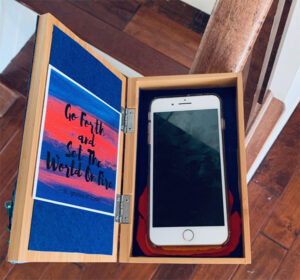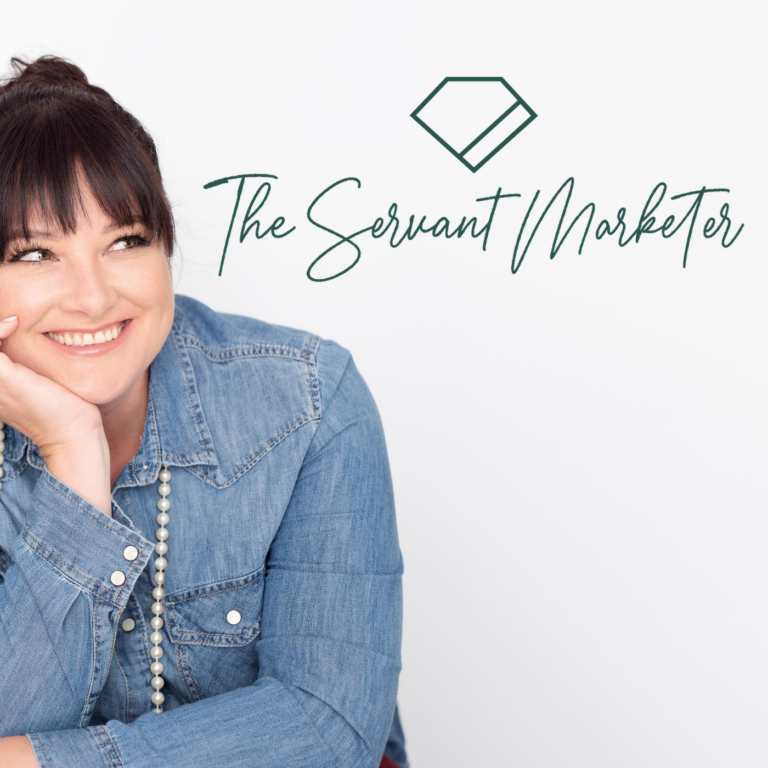Part of what makes the Gonzaga Organizational Leadership program unique is the hybrid approach of online, in-person and even study abroad options for their Master’s students. No matter what every student takes ORGL 605 at some point, which is titled Imagine. Create Lead. The time on campus for this class last year was an exceptionally transformational time for me. I seldom slow down and I realized while in Spokane how connected I am and how much my phone plays a role in my mental health. Connecting with my classmates in person and building a bond quickly over three days through comradery and vulnerability, left me with the desire to have more of that in my life.
I’ve always viewed leadership as traits or characteristics that I needed to develop, but the idea of seeing and seeing again has led me to realize that my desire to be a great leader starts with taking care of myself so I can tend to those I lead. This includes not just my team at work, but my family and friends. Self-care is this very trendy idea that often manifests in the idea of getting a pedicure or massage, but what I’ve realized is that my self-care is saying no. Sometimes that means saying no to opportunities that don’t light me up. Sometimes it means saying no to relationships that are draining. More than anything, for me, it means saying no to the impulse of the easy connection provided through my phone. While on the Gonzaga campus, I made a point of not checking my email and staying off of social media. At the time, I thought of this as a gift of time to myself. I didn’t realize how desperately I needed that time. We left the immersion with a renewed sense of community among our classmates, and the marching orders to go home and work on a creative project. There were no strong parameters given, which challenged us to see and see again.
Once I got home and was back in the groove of regular life, I started thinking a lot more about how my mental health affects those I lead. If I’m not healthy, I can’t serve those who need me. I’m one of the millions of people who deal with anxiety and depression. Some of this is genetic and chemical, but I believe a lot of it is situational as well and unbridled connectivity is a big player. Because of the type of work I do, I’ve been researching Gen Z and I found in the writings of Twenge (2017) that this generation is the most connected and the most anxious and depressed when compared to previous generations. They crave connection but do so almost entirely through digital means. Although I’m not a member of this Generation, I identified with the issues they deal with. Smartphone use has led to higher rates of mental illness.
Twenge wrote her book in 2017, but even in 1997 Palmer wrote about the pain of disconnection. He writes (pg. 90), “Intimacy is the highest value in human relationships. Because intimacy is regarded as the best therapy for the pain of disconnection.” I believe modern forms of connection, like social media, give us a false sense of intimacy. In 2018 (Busby), researchers found that social media copies the psychology of gambling to create patterns of use that mirror addiction.
 In Greek mythology, the Siren was a dangerous creature who lured sailors to their death through the enchantment of song. I call my creative project, The Siren Box. What I’ve recognized over the last 8 weeks is what a dangerous Siren song my phone is to me. Using my phone can be a blessing and a curse. There is beauty in having an information source at your fingertips and there are beautiful aspects of social media. Being connected to our loved ones who we may have lost touch with in previous decades when online connection didn’t exist can be a good thing. However, using my phone becomes either a filler for things that actually fill me up: running, crafting, reading to learn or for pleasure, spending face to face time with my friends and family, travel and a host of other things I’ve forgotten over time as I’ve replaced intimacy with a hunk of metal that connects to the internet – or – it becomes a stream of conscious browsing. Thinking about vacationing in Belize? Need to know immediately what year Teddy Roosevelt was born in? Considering a new pair of boots? Click, click, click.
In Greek mythology, the Siren was a dangerous creature who lured sailors to their death through the enchantment of song. I call my creative project, The Siren Box. What I’ve recognized over the last 8 weeks is what a dangerous Siren song my phone is to me. Using my phone can be a blessing and a curse. There is beauty in having an information source at your fingertips and there are beautiful aspects of social media. Being connected to our loved ones who we may have lost touch with in previous decades when online connection didn’t exist can be a good thing. However, using my phone becomes either a filler for things that actually fill me up: running, crafting, reading to learn or for pleasure, spending face to face time with my friends and family, travel and a host of other things I’ve forgotten over time as I’ve replaced intimacy with a hunk of metal that connects to the internet – or – it becomes a stream of conscious browsing. Thinking about vacationing in Belize? Need to know immediately what year Teddy Roosevelt was born in? Considering a new pair of boots? Click, click, click.
 On the front of the box is a glittery Siren tail representing the allure of what’s inside the box. I used a box that I had received from a vendor last year to represent my belief that we already have everything we need. It’s just a matter of believing and recognizing the God-given gifts we have and continue to develop. The Siren tail is made out of felt, which is a medium I’ve always admired on Pinterest, but never actually tried. This project made me question why I hadn’t done this before. I stood in the aisles of Hobby Lobby and thought about what a better Siren song that was (not the consumerism), but all of the creative potential that was available to me.
On the front of the box is a glittery Siren tail representing the allure of what’s inside the box. I used a box that I had received from a vendor last year to represent my belief that we already have everything we need. It’s just a matter of believing and recognizing the God-given gifts we have and continue to develop. The Siren tail is made out of felt, which is a medium I’ve always admired on Pinterest, but never actually tried. This project made me question why I hadn’t done this before. I stood in the aisles of Hobby Lobby and thought about what a better Siren song that was (not the consumerism), but all of the creative potential that was available to me.
 When the box is opened, a felt fire is on the bottom panel and St. Ignatius’s quote, “Go forth and set the world on fire,” is placed on the inside of the door. The fire is three layers of felt that I sewed together. I designed the World on Fire panel in Canva after trying to teach myself hand lettering. I realized that writing on the felt wasn’t going to work. This was a good lesson in leadership and creativity. When I realized that the hand lettering wouldn’t work directly on the felt, I adjusted the plan.
When the box is opened, a felt fire is on the bottom panel and St. Ignatius’s quote, “Go forth and set the world on fire,” is placed on the inside of the door. The fire is three layers of felt that I sewed together. I designed the World on Fire panel in Canva after trying to teach myself hand lettering. I realized that writing on the felt wasn’t going to work. This was a good lesson in leadership and creativity. When I realized that the hand lettering wouldn’t work directly on the felt, I adjusted the plan.
Because I work in a creative field, I think I’ve given myself a pass on how important creativity is to my health outside of the office. Often my creative work is tied to a desired outcome. This part of my career can be really fulfilling, but it’s not the same as activating the part of the mind that creating just for the pure joy of creating can do. Nurturing this part of myself is an important part of helping me lead. As I was creating the Siren Box, I felt my mind focus on the project at hand instead of the constant hamster wheel pattern I’ve accepted. Giving myself space makes me a stronger leader.
Here was my intention when I wrote this post after visiting Gonzaga and creating the box:
 I saw the St. Ignatius quote on a wall when I was on campus at Gonzaga so I wanted to incorporate that into my project. It serves as a reminder to get out and do the work that lights me up that may in turn light the world up. When I am home my phone will live in the Siren Box in my closet. Each time I place the phone in the box or remove it, I will ask myself if I am choosing to get on my phone to fill a void of false intimacy or if I’m using technology as a tool to set the world on fire.
I saw the St. Ignatius quote on a wall when I was on campus at Gonzaga so I wanted to incorporate that into my project. It serves as a reminder to get out and do the work that lights me up that may in turn light the world up. When I am home my phone will live in the Siren Box in my closet. Each time I place the phone in the box or remove it, I will ask myself if I am choosing to get on my phone to fill a void of false intimacy or if I’m using technology as a tool to set the world on fire.
I don’t think I stuck to this for more than a few weeks, and quickly my phone has become a problem again. In this year of being home, managing a crazy workload, leading a team, homeschooling, parenting, and having limited options for interaction with friends, the phone became that place of intimacy. As I finish my time at Gonzaga, I’m publishing this again to remind myself and others, that the little hunk of metal we carry around is not and should be the end all be all of our connection to the world.
Resources
Busby, M. (2018, May 8). Social media copies gambling methods ‘to create psychological cravings’. Retrieved from https://www.theguardian.com/technology/2018/may/08/social-media-copies-gambling-methods-to-create-psychological-cravings.
Palmer, P. J. (1997). The Courage to Teach: Exploring the Inner Landscape of a Teacher’s Life. San Francisco: Jossey-Bass.
Twenge, J. M. (2018). I Gen: Why Today’s Super-Connected Kids Are Growing Up Less Rebellious, More Tolerant, Less Happy – and Completely Unprepared for Adulthood – and What That Means for the Rest of Us. New York: Atria Books.





Recent Comments